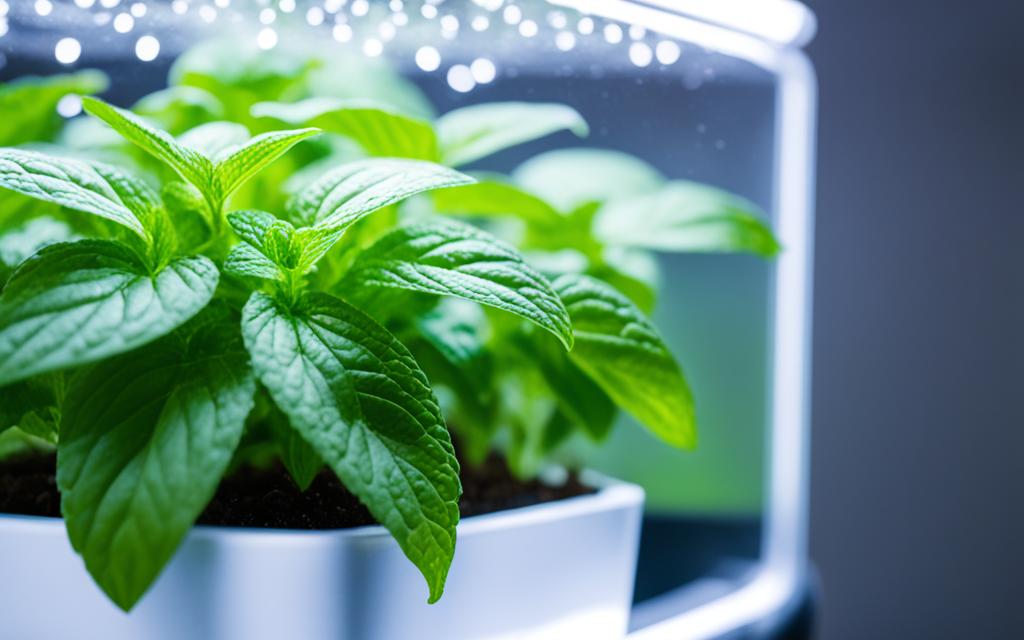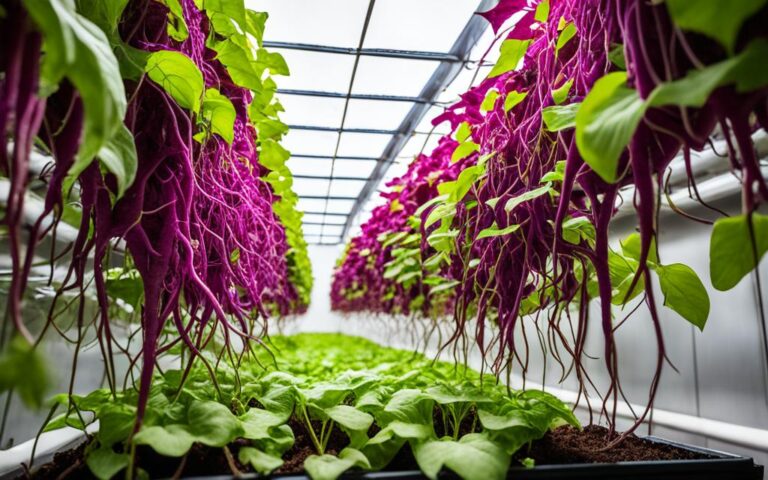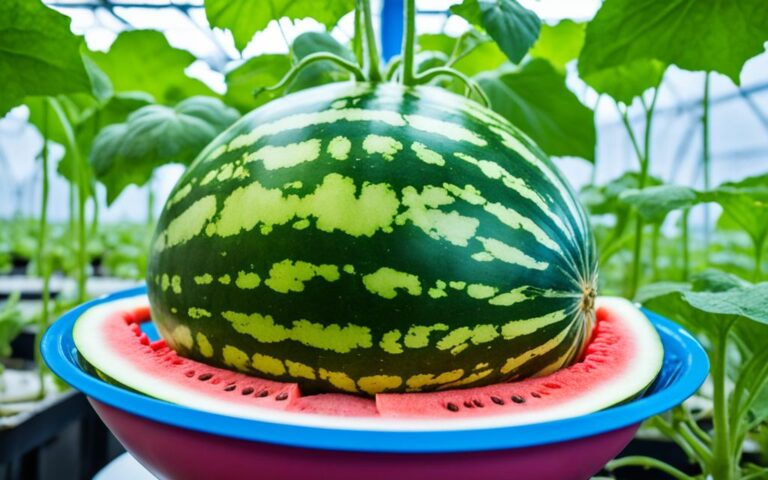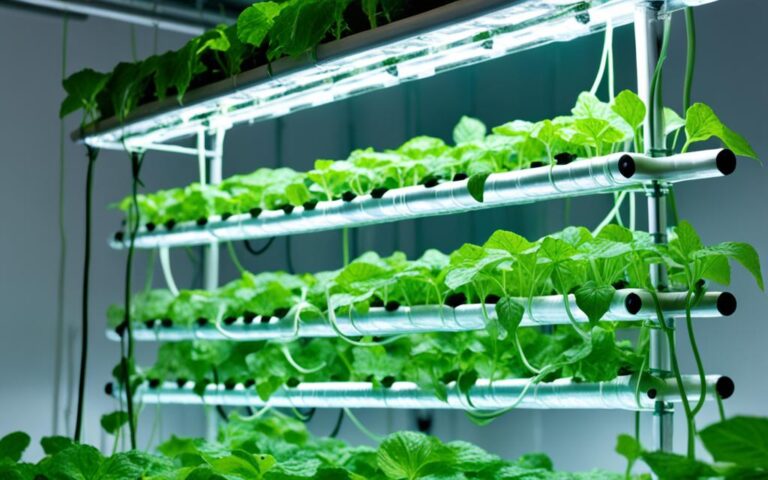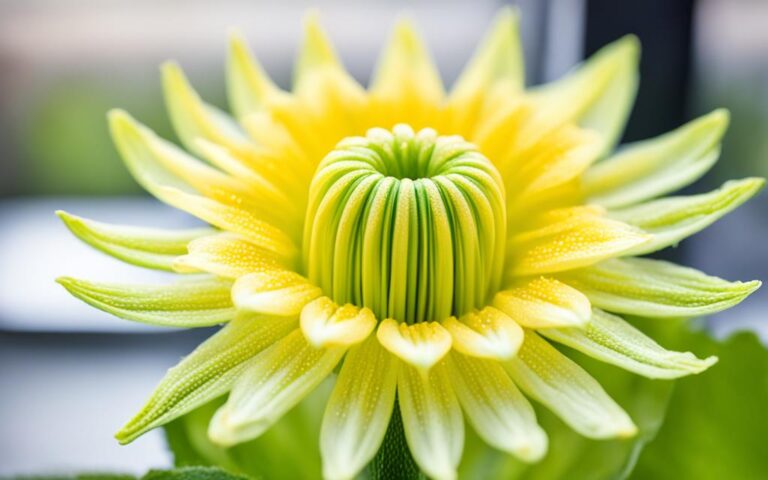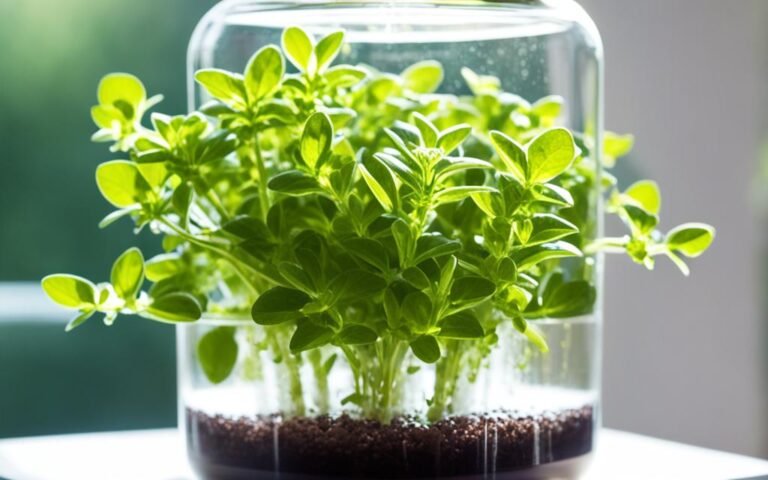Growing Hydroponic Peppermint: Tips and Techniques
Mint is a favorite herb that thrives in hydroponic systems. Hydroponic peppermint brings a fresh taste all year. This guide will share tips and techniques for growing hydroponic peppermint. You’ll learn about choosing the best varieties, increasing your harvest, and keeping your plants growing.
Growing hydroponic peppermint has many benefits. It lets you enjoy this fragrant herb all year, no matter the weather. By controlling things like temperature, light, and nutrients, you can grow top-quality peppermint easily. This makes it perfect for indoor gardeners, city farmers, and businesses looking for a steady, green supply of this tasty herb.
Key Takeaways
- Hydroponic peppermint offers a fresh, crisp flavor year-round
- Controlled environment agriculture allows for optimized growing conditions
- Hydroponic peppermint is suitable for indoor gardeners, urban farmers, and commercial producers
- Comprehensive tips and techniques will be covered, from variety selection to maximizing yield
- Hydroponic peppermint is a versatile herb with culinary and medicinal benefits
Table of Contents
Introduction to Hydroponic Peppermint
Peppermint is a fragrant herb that belongs to the mint family. It’s loved for its many uses in cooking and medicine. Growing peppermint hydroponically lets gardeners and growers cultivate it indoors, away from outdoor weather. This method is efficient and popular for indoor gardening and growing mint without soil.
Hydroponics is a soilless way to grow plants. It lets peppermint roots get nutrients directly from water. This method is perfect for peppermint, offering the right conditions for growth in small spaces like a vertical greenhouse.
Peppermint grows fast and does well in hydroponics. With the right light, temperature, and nutrients, it can mature quickly. This means growers can have a steady supply of peppermint all year, no matter the weather outside.
“Hydroponic peppermint cultivation presents a unique and efficient way to grow this flavorful herb, making it a popular choice for indoor herb gardening and soil-free mint cultivation.”
Learning about hydroponic peppermint growing helps gardeners and producers get the most out of this versatile herb. This guide covers the key aspects of growing peppermint hydroponically. It aims to help readers create a lush, scented garden or a successful commercial operation.
Selecting the Right Peppermint Variety
Choosing the right peppermint variety is key when growing hydroponic peppermint. There are two main types: peppermint and spearmint. Peppermint is sweet and refreshing, great for food and drinks. Spearmint tastes more savory and is often used in cooking.
There are also specialty varieties like chocolate mint, apple mint, and orange mint. Each has a unique flavor and aroma.
Peppermint vs. Spearmint
Peppermint and spearmint differ in flavor and makeup. Peppermint has more menthol, making it sweeter and more refreshing. Spearmint is milder, with a herbal taste and less menthol.
Best Hydroponic Peppermint Varieties
Some top hydroponic peppermint varieties include:
- Chocolate Mint – Known for its rich, sweet flavor, perfect for desserts and teas.
- Apple Mint – Offers a refreshing taste with an apple-like aroma, ideal for drinks and salads.
- Orange Mint – Has a zesty flavor, great for cocktails, sorbets, and other dishes.
Choosing the right peppermint variety can greatly affect your hydroponic setup’s quality and flavor. Try different types to see which one you like best.
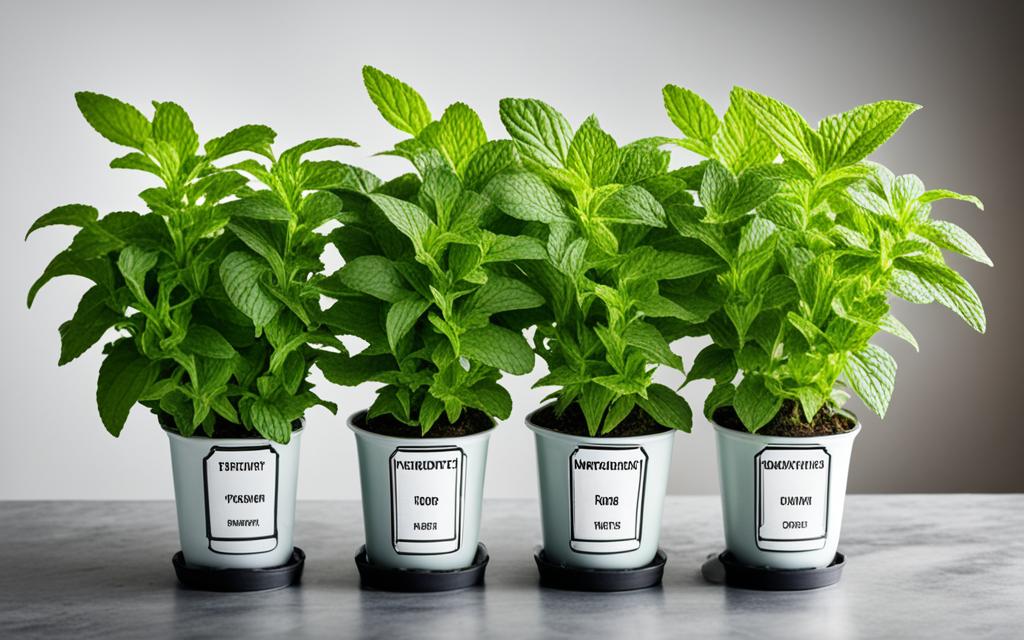
Starting Hydroponic Peppermint
Peppermint is a versatile and popular herb that thrives in hydroponic systems. Gardeners can grow it from seeds, clone plants, or move store-bought ones to their hydroponic setup. Each method has its own benefits and things to consider.
Growing from Seeds
Growing hydroponic peppermint from seeds is rewarding but takes time. Germination takes 10 to 15 days in 70-75°F temperatures. After seedlings appear, they need constant moisture, good lighting, and balanced nutrients to do well.
Cloning Existing Plants
Cloning is quicker for starting hydroponic peppermint. By taking cuttings from existing plants, you get new ones that are just like the original. This method gives you a fast way to keep up a steady peppermint supply all season.
Transplanting Store-Bought Plants
For an immediate source of mature peppermint, transplanting store-bought plants into hydroponics is handy. But, make sure to adjust the plants to their new home well. This helps them grow healthy and strong.
Choosing any starting method, taking good care of your hydroponic peppermint plants is key. Knowing what this herb needs helps gardeners get a lot of fresh, tasty peppermint.
Choosing the Right Hydroponic System
When growing peppermint hydroponically, gardeners have many options. The best hydroponic system for peppermint depends on space, budget, and what you like. Peppermint grows well in systems that support its roots, like a hydroponic peppermint tower or a big ebb and flow hydroponic peppermint setup.
The NFT (Nutrient Film Technique) system is a top pick for peppermint hydroponics. It gives plants a steady flow of nutrients, perfect for peppermint and other leafy greens. The NFT hydroponic peppermint system is easy to use, saves water and nutrients, and fits well in homes.
The DWC (Deep Water Culture) system uses a big reservoir for nutrient solution. It’s great for saving space and is easy for beginners to use. It’s a good choice for those new to DWC hydroponic peppermint.
For those with more space or experience, the ebb and flow hydroponic peppermint system is an option. It floods a grow bed with nutrients at times, helping to grow peppermint seedlings.
Choosing the best hydroponic system for peppermint depends on your needs and what you like. Think about the space you have, your budget, and how much upkeep you’re okay with for your hydroponic peppermint garden.
“Hydroponics accelerates plant growth by 20% and increases yield by at least 25% compared to traditional soil gardening methods.”
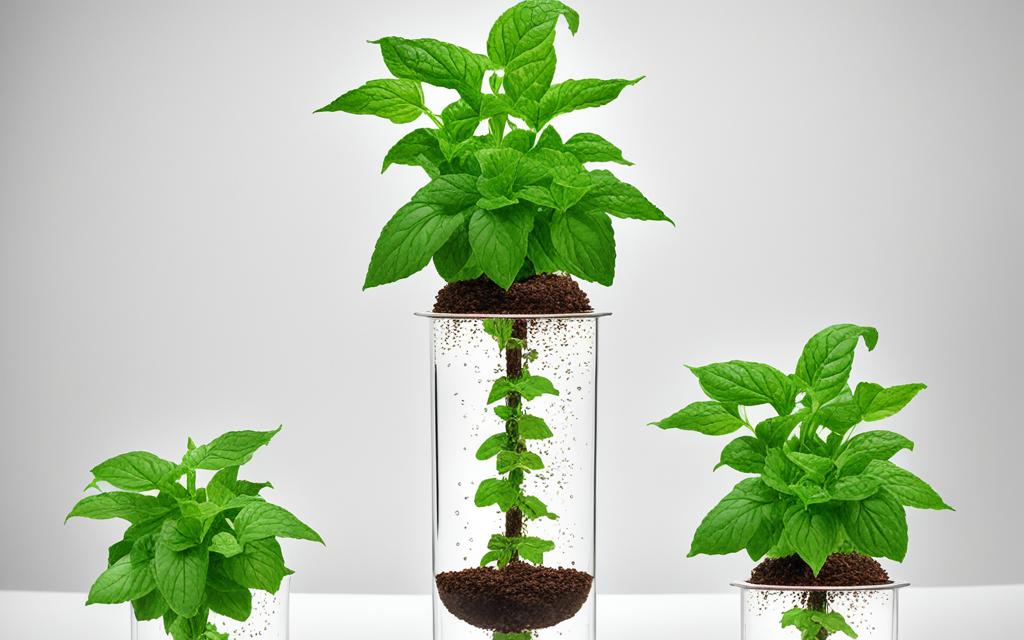
Temperature Requirements for Hydroponic Peppermint
Keeping the right temperature is key for growing healthy hydroponic peppermint. The best temperature for growing peppermint hydroponically is between 55-70°F (12-21°C). This range helps the plant grow well and produce tasty leaves.
During the day, the ideal temperature for hydroponic peppermint is 65-70°F (18-21°C). At night, it should be around 50-55°F (10-13°C). Keeping the temperature steady is important. Using a temperature controller can help keep the grow room at the ideal temperature for hydroponic peppermint all the time.
Changes in temperature can hurt the health and growth of hydroponic peppermint. Keeping a consistent temperature is key to avoid stress and ensure good growth. With a stable, good environment, your hydroponic peppermint plants will grow well and give you lots of harvests.
| Environmental Factor | Ideal Range for Hydroponic Peppermint |
|---|---|
| Temperature (Daytime) | 65-70°F (18-21°C) |
| Temperature (Nighttime) | 50-55°F (10-13°C) |
| Humidity | 40-60% |
| pH | 5.5-6.5 |
| Light Cycle | 16-18 hours per day |
By keeping the ideal temperature range for hydroponic peppermint and other important factors right, you can make the perfect environment for your plants. This will help them grow well and give you lots of tasty, fragrant leaves.
Spacing and Light Requirements
Growing hydroponic peppermint needs the right spacing and lighting for best growth. Let’s look at what’s important.
Ideal Plant Spacing
Keep hydroponic peppermint plants 9-12 inches apart. This lets them spread out and get good air flow. It also stops them from fighting over space and resources.
Lighting Needs for Optimal Growth
Peppermint doesn’t need a lot of light. It does well under T5 fluorescent fixtures for 12-16 hours a day. These lights give off blue light, which is great for making the plants grow strong.
Or, you can use LED or HID lighting systems. These can be set to give the right amount and type of light for the peppermint.
| Lighting Requirement | Recommendation |
|---|---|
| Lighting Intensity | 500 μmol/m²/s or higher |
| Lighting Duration | 12-16 hours per day |
| Lighting Spectrum | Blue spectrum for vegetative growth |
By thinking about hydroponic peppermint plant spacing and lighting requirements, growers can make a great place for their peppermint. This helps the plants grow well and gives lots of tasty peppermint.
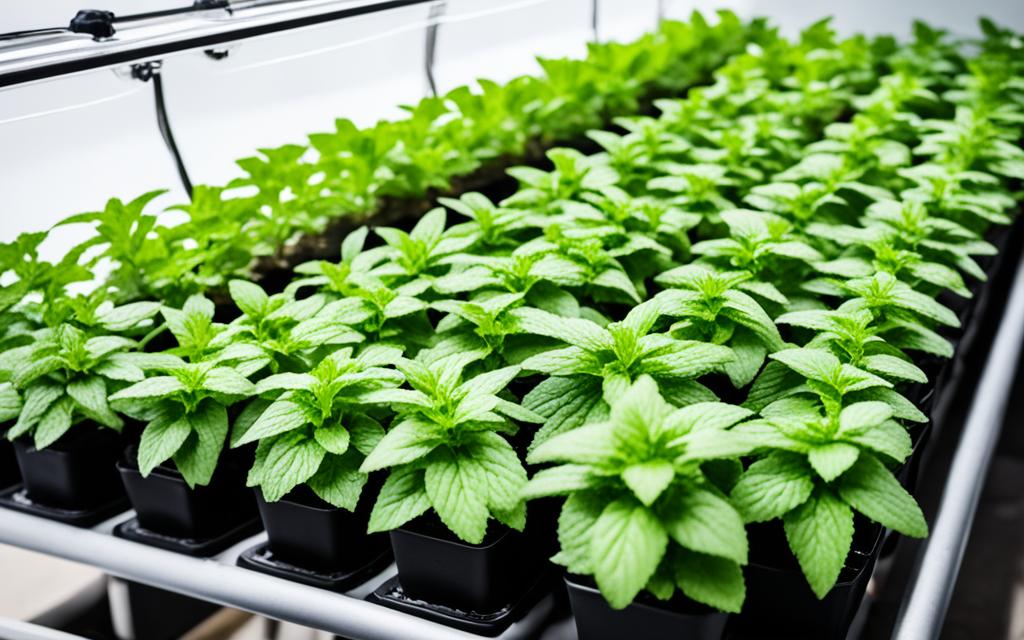
hydroponic Peppermint Nutrient Solution
Growing hydroponic peppermint needs the right nutrient solution for good health and growth. Unlike some plants, hydroponic peppermint doesn’t need special mixes because it doesn’t flower or produce fruits.
Essential Nutrients
A balanced nutrient solution with lots of nitrogen, like Dyna Gro Foliage Pro, is great for hydroponic peppermint. This mix gives the plants the important nutrients they need, including:
- Nitrogen for lush foliage
- Phosphorus for root development
- Potassium for overall plant vigor
- Calcium, magnesium, and sulfur for proper structural support
- Trace elements like iron, manganese, and zinc for enzyme function and chlorophyll production
pH and EC Levels
For the best growth, keep the right pH and EC levels in the nutrient solution. Peppermint likes a pH of 6.0-7.0 for good nutrient uptake and health. The ideal EC is 2.2-2.6 for strong growth and development.
It’s important to check and adjust the nutrient solution often for healthy growth and a good yield. With the right balance of nutrients, pH, and EC, you can make the perfect conditions for your peppermint to thrive.
Caring for Your Hydroponic Peppermint Plants
Proper hydroponic peppermint care is key for your mint’s health and growth. Make sure the roots stay wet, as peppermint likes a moist environment. Watch your hydroponic peppermint plants for stress or disease signs and fix problems fast to keep them healthy.
For maintaining hydroponic peppermint, focus on the hydroponic peppermint watering schedule. Keep the soil moist but don’t overwater, which can cause root rot and health problems. Check the water level often and add more as needed to give the roots the nutrients and moisture they need.
Give your hydroponic peppermint plants lots of hydroponic peppermint care by watching their growth. Look for nutrient shortages, pests, or diseases and deal with them quickly. This keeps your hydroponic peppermint plant health strong. Regular pruning and trimming also help plants grow fuller and keep their shape.
| Maintenance Task | Frequency |
|---|---|
| Check water level and refill as needed | Daily |
| Monitor for pests and diseases | Weekly |
| Prune and trim plants | Monthly |
| Clean the hydroponic system | Every 2-3 months |
By using these hydroponic peppermint care tips and sticking to a routine, you can keep your plants healthy for a long time. This will help you get more of this useful and fragrant herb.
Common Pests and Diseases
Hydroponic peppermint is usually tough, but it can face pests and diseases. Knowing how to spot and treat these issues is crucial.
Identifying and Treating Pests
Spider mites, aphids, and whiteflies are common pests for hydroponic peppermint. Spider mites make leaves look yellow and create webs. Aphids cause leaves to grow funny and stunt growth. Whiteflies spread viruses and make a sticky substance that grows mold.
To fight these pests, check your plants for insects, webs, or color changes. Quick action, like using insecticidal soap or natural enemies, can stop pests from harming your plants.
Preventing and Managing Diseases
Hydroponic peppermint can get diseases like powdery mildew and root rot. Powdery mildew looks like white dust on leaves, and root rot makes plants wilt and turn color.
To stop and handle these diseases, keep growing conditions good, clean up well, and use organic fungicides if needed. Good air flow, checking nutrients, and looking at new plants can lower disease risks.
By watching closely and acting fast, growers can keep pests and diseases from hurting their hydroponic peppermint. This keeps the plants healthy and strong.
“Proper identification and prompt treatment are key to addressing pests and diseases in hydroponic peppermint cultivation.”
Harvesting Hydroponic Peppermint
Harvesting hydroponic peppermint at the right time is key. This fast-growing herb can be picked several times during the season. The best time is when the plants are in their vegetative stage, about 4-6 weeks after planting.
When to Harvest
Peppermint is ready to be picked when its leaves are bright green and the plants are 8-12 inches tall. This is usually 4-6 weeks after planting. The exact timing can change based on growing conditions, the nutrient solution, and the peppermint type.
Proper Harvesting Techniques
To harvest hydroponic peppermint, use the “cut and come again” method. Cut the stems 3-4 inches above the base, leaving the lower leaves. This way, the plant will regrow, giving you more peppermint.
Use sharp, clean scissors or pruning shears for clean cuts. Don’t tear or harm the plant. Put the harvested peppermint in a clean container and handle it carefully to keep its flavor and oils. This way, you help the plant stay healthy and promote more growth.
By following these tips on timing and harvesting, you can get a lot of fresh, fragrant hydroponic peppermint all season.
Using and Preserving Hydroponic Peppermint
Culinary Uses
Hydroponic peppermint is a versatile herb with many uses in the kitchen. Its refreshing flavor and aroma are great in teas, lemonades, cocktails, desserts, and savory dishes. You can add a minty twist to your favorite iced tea or infuse your homemade peppermint brownies with extra flavor.
One popular way to use hydroponic peppermint is in classic peppermint tea. Just steep a few fresh leaves in hot water for a soothing drink. It also pairs well with fruits, making it perfect for fruit salads, smoothies, and cocktails like mojitos or peppermint Moscow mules.
Beyond drinks, hydroponic peppermint can add flavor to both sweet and savory dishes. Try sprinkling chopped peppermint leaves over roasted vegetables or adding them to your favorite pasta sauces. You can also garnish ice cream or chocolate desserts with them. The possibilities are endless.
Storing and Preserving Mint
To keep your hydroponic peppermint fresh, try these storage and preservation methods. One easy way is to store the leaves in the refrigerator. Put the stems in a glass of water, cover with a damp paper towel, and keep in the fridge for up to a week.
For longer storage, dry the peppermint leaves. Hang the stems upside down in a dry area or spread the leaves on a baking sheet in a warm spot. Once dry, store them in an airtight container in a cool, dark place. Dried peppermint leaves are great for teas, seasonings, and infusions.
Freezing is another good way to preserve hydroponic peppermint. Chop the leaves and fill an ice cube tray with water. Once frozen, transfer the mint cubes to a freezer-safe bag or container. These frozen mint cubes can be added to drinks, sauces, or any dish that needs a minty flavor.
“The refreshing fragrance and versatility of hydroponic peppermint make it an indispensable ingredient in my kitchen. From infusing my favorite beverages to elevating both sweet and savory dishes, this herb is a true culinary delight.”
Maximizing Yield and Continuous Growth
To get the most out of hydroponic peppermint, you need a good plan. This helps ensure your plants grow well and keep producing. By using the best methods, you can make the most of this herb’s benefits.
First, make sure your plants have the right conditions to grow. This means keeping the temperature right, giving them enough light, and feeding them well. Keeping an eye on these things and making changes as needed can really help your peppermint thrive.
Pruning and trimming your plants is also key. Cutting back older or damaged parts makes them focus on growing new, healthy leaves. This not only boosts your harvest but also keeps your plants producing all season long.
Having a regular watering and feeding schedule is also crucial. Your plants need the right amount of water and nutrients at the right times. This keeps them strong and healthy, avoiding problems like nutrient shortages or diseases.
By using these tips, you can make your hydroponic peppermint grow better and produce more. This means you’ll have a lot of peppermint to enjoy season after season.
“Continuous growth and high yield go hand in hand when it comes to successful hydroponic peppermint cultivation. With the right techniques and care, you can truly maximize the potential of this versatile herb.”
Conclusion
Growing hydroponic peppermint is rewarding and lets you enjoy this tasty herb all year. By using the tips in this guide, you can grow hydroponic peppermint for personal or commercial use. It’s great for indoor gardens because it’s easy to care for and adds a fresh touch to cooking.
There are many benefits to growing peppermint hydroponically. These systems give peppermint plants the right nutrients, temperature, and light. This leads to more essential oils and faster growth than growing in soil. Plus, it’s cheaper and uses less space, making it good for both hobbyists and big growers.
If you want to add freshness to your cooking or just love the smell of peppermint, try growing hydroponic peppermint. With the help of this guide, you can make the most of this versatile herb. Enjoy the benefits of a thriving hydroponic peppermint garden.
